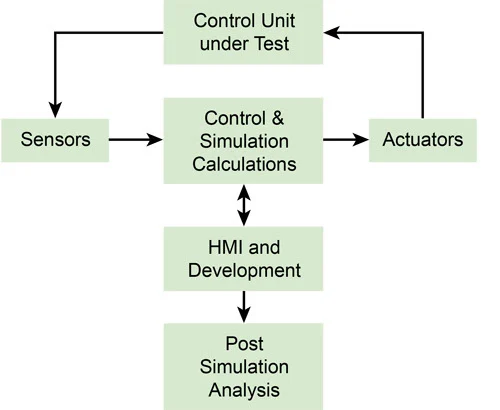The proliferation of electronics in automotive—to provide active safety in vehicles, for example—has demanded evolving strategies for automated test. Plenty of standard features and options make cars safer to drive. ABS and air bags are obvious, but also systems that alert drivers when vehicles are in their blind spot, adaptive cruise control, and many others.
With the array of the features and options available in vehicles, during development, an ECU is typically exercised by a test system that simulates the real-world environment in which it will operate. This is known as hardware-in-the-loop simulation (HiLS). Stimulus instrumentation simulates the ECU’s sensor inputs, while measurement instrumentation is used to capture and verify its control outputs. Safety-critical controllers go through a certification process where a series of faults are introduced, and the ECU’s responses are checked, to verify that it operates in a safe and predictable manner.
To inject faults, a manual patch panel is often employed. Cables are used to connect the ECU’s I/O lines to stimulus and measurement instrumentation. I/O lines may be disconnected to simulate open-circuits or tied together to simulate short-circuits to ground, voltage sources, or other I/O lines. Engineers move the patch cables to simulate desired faults and then measure the results.
However, this approach has inherent disadvantages, including size, as patch panels tend to be large. Operation is also slow and prone to error, leading to a lack of repeatability. Being able to rapidly and precisely reproduce failed test conditions is a major advantage, so automating this type of test helps produce a traceable report, free from human error.
Therefore, software control of both instrument routing and insertion of real-time electrical faults greatly enhances the testing process. The principle of fault insertion is simple: switch modules intercept wires between the test system and ECU, and either pass the signals through unchanged or add a range of fault conditions.
Fault Insertion switching—such as that offered by Pickering Interfaces—Is a vital feature of ECU test and verification strategy, especially in safety-critical applications.

